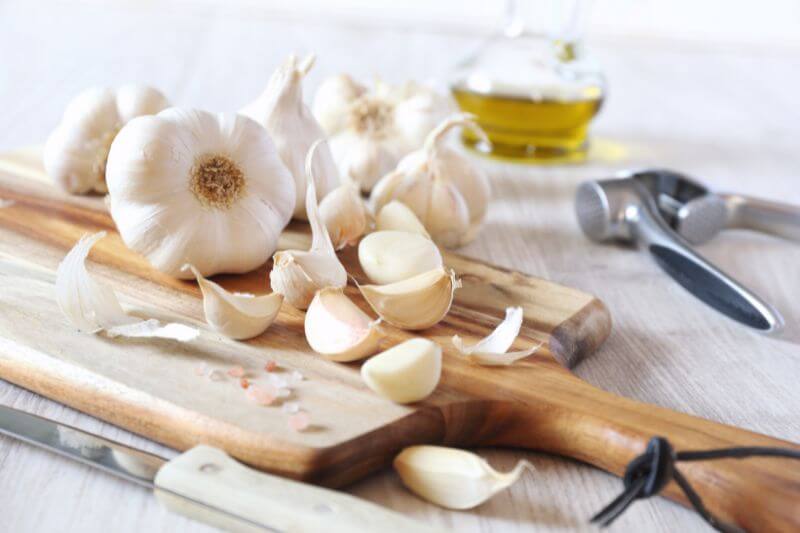Garlic, famous for warding off vampires and ensuring a sweet kiss, is also a highly regarded ingredient in cuisines worldwide. Fortunately for our bodies, aside from its distinctive flavor and ability to elevate many recipes, garlic is celebrated for its myriad health benefits. Let’s delve into that.
Garlic is much more than just a culinary ingredient; it is packed with beneficial compounds such as allicin and allyl sulfide, which positively influence blood pressure, cholesterol levels, immune function, and disease prevention. Let’s explore further.
Key Components of Garlic
Garlic has earned its superfood status due to its chemical constituents, which are responsible for its health benefits.
Allicin is one of the main bioactive compounds found in garlic. When garlic is crushed or chopped, it releases allicin, which has antimicrobial and antioxidant properties and promotes cardiovascular health by lowering cholesterol and preventing diseases. This compound is what gives garlic its characteristic smell.
Another vital component in garlic is allyl sulfide. It contributes to garlic’s aroma and flavor but also offers unique health advantages. Allyl sulfide is associated with lowering blood pressure, preventing heart diseases, and exhibiting anticancer effects.
In addition to its active ingredients, garlic is also rich in essential nutrients. A serving of garlic contains important vitamins and minerals, including vitamin C and vitamin B6. These nutrients play crucial roles in supporting overall health.
Health Benefits of Garlic
One of the most researched benefits of garlic is its ability to reduce blood pressure. Studies have shown that regular consumption of garlic can lead to a moderate decrease in blood pressure, which is beneficial for cardiovascular health.
This superfood can also aid in lowering cholesterol levels in the blood. The components of garlic, particularly allicin and allyl sulfide, have demonstrated effectiveness in reducing LDL cholesterol, commonly known as “bad cholesterol.” This decrease in cholesterol is vital for preventing heart disease.
Garlic is recognized for its potential to boost the immune system. Its antimicrobial properties can assist in fighting infections and promoting overall health.
Additionally, garlic has been linked to the prevention of numerous diseases. Among these, the prevention of heart disease is especially notable. Regular garlic consumption may help lower the risk of heart disease by improving arterial health and reducing inflammation.
Research suggests that garlic may offer protective effects against cancer. Its antioxidant properties and ability to inhibit the growth of cancer cells make it a potential ally in preventing certain cancers, including stomach and colorectal cancers.
Ways to Incorporate Garlic in Your Cooking
So, how can you incorporate more garlic, which may be hard to digest and has a strong flavor, into your daily meals? Here are some ideas for adding garlic to your dishes:
- Roasted garlic: Roasting garlic cloves makes them sweet and creamy, perfect for spreading on bread or enhancing your sauces.
- Confited garlic: Confited garlic is a delicious, sweet treat that can be added to pasta dishes, salads, or pizzas.
- Garlic in stir-fries: Add chopped garlic to your vegetable stir-fries for an irresistible flavor boost.
- Garlic marinades: Create garlic-based marinades for meat, poultry, or fish to infuse them with delightful taste.
- Soups and stews: Garlic is a staple ingredient in many soups and stews, contributing both flavor and health benefits.
By integrating more garlic into your diet, you can significantly enhance your well-being.
Did You Know
During World War I, garlic was used to treat infections and wounds among soldiers on the battlefield. Due to its natural antimicrobial and antiseptic properties, garlic served as an accessible and effective remedy for disinfecting wounds and preventing infections.







